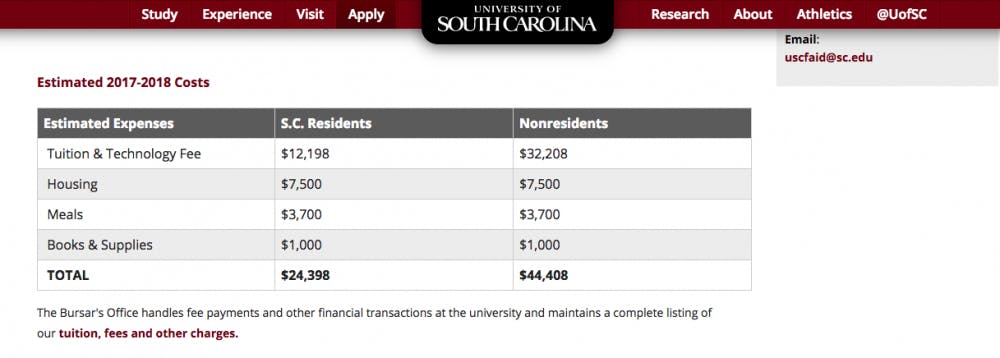It’s not news to anybody that student loan debt has reached absurd proportions. Sitting at a cool $1.3 trillion, it exceeds the GDPs of Australia, New Zealand and Ireland combined. While the magnitude of the problem is obvious, the causes are less so. Societal pressure to attend college and overblown tuition prices both fit into the explanation of this popular narrative. However, this fails to account for another major source of the problem: bait-and-switch.
Universities reel in unsuspecting students with various promises and incentives until they sign on the dotted line, then bombard them with an overwhelming number of hidden fees and expenses that undermine students’ abilities to keep a handle on their finances. This dirty-dealing is perpetrated by schools everywhere, and USC is no exception.
It would be reasonable enough for a student to apply to USC under the impression that the only things they’ll owe directly to the university is tuition. However, upon attending USC, they could be blindsided by the mandatory freshman meal-plan charge, technology fee, post box fee and lab fee.
However, it’s not just freshmen who have to be vigilant. An upperclassman might be equally caught off guard when they discover that residence in Bates House and Preston also requires expensive meal plans.
With a convoluted and disorganized web of expenses, one would hope that USC’s Bursar’s Office would be able to do some untangling. After all, they claim to be the University’s hub of “transparent cost information," and while the Bursar’s office does in fact offer a cost estimate chart for incoming freshmen, don’t be fooled. The estimate has information about tuition and technology, housing, meal and book and supply fees, but at best, this information is misleading.
Aside from the overly-conservative estimates — anyone spending under $1,000 on books each year is doing some price-matching wizardry — the chart gives no indication that other program, class and residence fees even exist.
Now, a responsible student might expect this sort of shadiness and decide to do his own research, but how would he know what to look for? Should he know intuitively that art history counts as a lab and comes with an $80 fee, or should he do his best to memorize the complete list of mandatory, optional and department fees along with their 111 corresponding endnotes? Even if a student is able to wade through the deluge of fees to make an informed decision, they still can’t know what to expect.
For instance, a student can be upgraded from a double- to single-dorm for an additional $670 against their preference and at their own expense — speaking from experience. Not to mention that fees can increase at any time; the Honors College fee jumped to $575 from $475 last semester without explanation. In this situation, it would be about as helpful for the student to consult a Magic 8-ball, swipe a credit card and cross their fingers.
When a student makes a commitment to a university, it is understood that the university makes a commitment to the student. Colleges and universities should encourage and foster responsible decisions, not impede them. When a university throws so many hurdles in the way of predicting and managing costs, it’s easy to see budgeting as futile. Why make an effort to hold onto money when it can be taken arbitrarily? In order to alleviate this debt crisis, it is important for universities to regain trust by showing that financial responsibility is possible and actually pays off.

